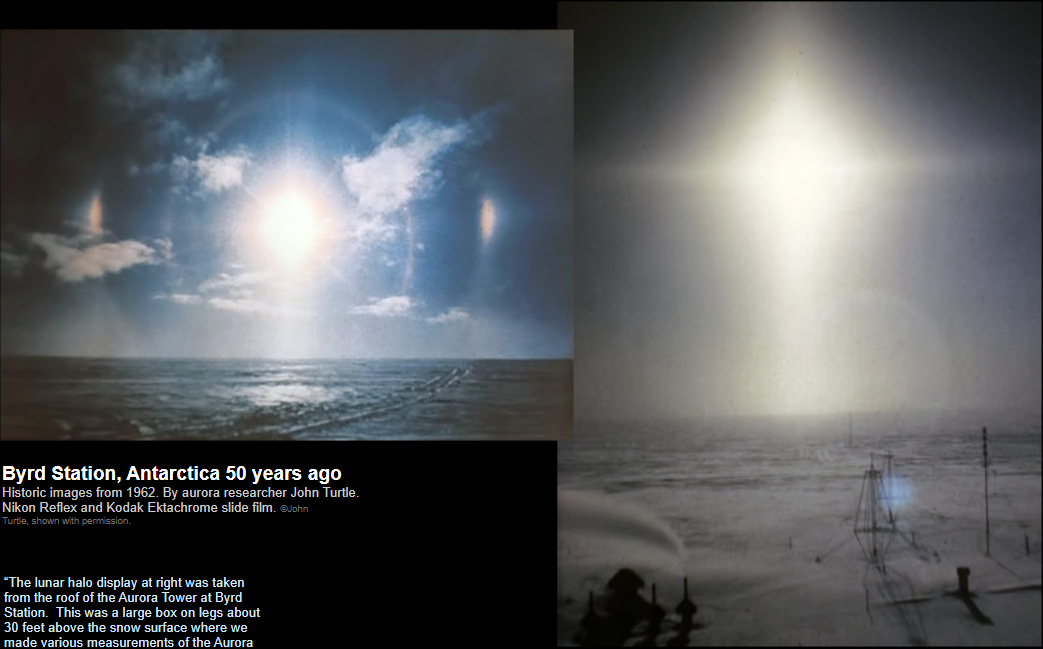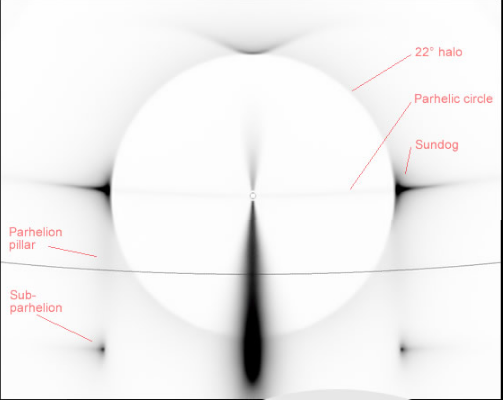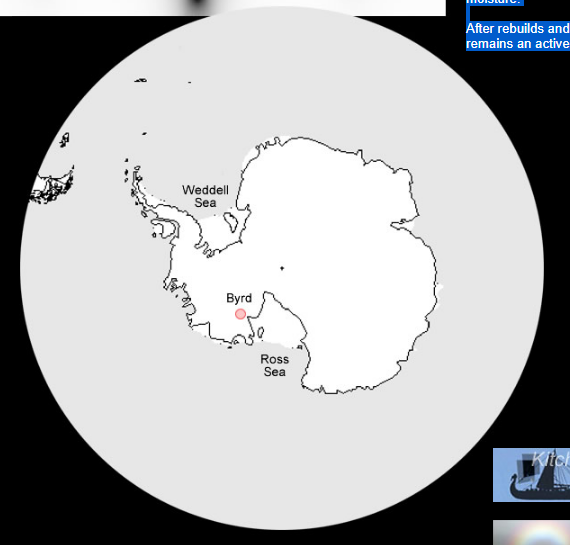OPOD - Historic Antarctica
OPOD - Historic Antarctica: A Glimpse into the Past
Antarctica, the icy continent at the southernmost part of the Earth, holds a rich history of scientific exploration and discovery. In this article, we delve into the fascinating world of atmospheric optics in Antarctica, specifically focusing on historic images captured at Byrd Station in 1962. These captivating photographs, taken by aurora researcher John Turtle, provide a window into the breathtaking displays of light phenomena that occur in this remote region.
The Enigmatic Lunar Halo Display
One of the remarkable images captured by John Turtle showcases a rare atmospheric phenomenon known as the lunar halo display. This ethereal sight features a halo cross, a beloved subject for artists and illustrators. However, its occurrence is quite infrequent. The lunar halo cross seen in the photograph was created by diamond dust plate crystals suspended in the atmosphere. These tiny ice crystals reflect and refract moonlight, resulting in the formation of this stunning visual spectacle.
The Solar Halo Display: A Celestial Masterpiece
Another mesmerizing image from Byrd Station portrays a solar halo display. The photograph, taken from the Byrd Auroral Substation, captures a captivating interplay of light around the sun. While an inner ring artifact caused by the bright sun can be disregarded, the image reveals a faint and broad parhelic circle intersecting the scene along with a subtle 22-degree halo. Two sundogs, vibrant patches of light on either side of the sun, dominate the composition.
Pillars Descending from Sundogs: A Heavenly Connection
The pillars extending downwards from the sundogs in the solar halo display photograph create an awe-inspiring sight. These pillars, known as sun pillars, connect the parhelia (bright spots on either side of the sun) to subparhelia below the horizon. The HaloSim ray tracing diagram provides insights into the formation of these pillars. Rays of light enter a plate crystal's side face, internally reflect from the lower hexagonal face, and then exit through another side face inclined at an angle of 60 degrees to the first.
The Legacy of Byrd Station
Byrd Station, named after the renowned polar explorer Richard E. Byrd Jr., played a significant role in scientific research during the International Geophysical Year in 1957. The original station, constructed in 1956-1957, endured harsh conditions and unknown territories as materials were hauled by tractor over a distance of 1000 kilometers through Marie Byrd Land. This pioneering station consisted of four prefabricated buildings interconnected by tunnels, which served as the hub for various scientific measurements, including those related to the Aurora Australis.
New Byrd: An Underground Haven
Due to accumulating snow risking the collapse of the original Byrd Station, a second station, aptly named New Byrd, was commissioned in 1961. This new station was predominantly built underground, with tunnels connecting different areas. The construction aimed to mitigate the adverse effects of ice, snow, and internal moisture. New Byrd stood strong for a decade before succumbing to the challenging Antarctic environment.
The Ever-Present Spirit of Exploration
Despite the challenges faced by Byrd Station and its subsequent rebuilds and relocations, it remains an active Antarctic base today. This enduring presence reflects the indomitable spirit of exploration and scientific inquiry that characterizes Antarctica. Researchers and scientists continue to study atmospheric optics, auroras, and various other natural phenomena in this extreme environment, contributing to our understanding of the Earth's atmosphere and beyond.
In conclusion, the historic images captured at Byrd Station in Antarctica offer a captivating glimpse into the enchanting world of atmospheric optics. These photographs not only showcase rare phenomena like lunar halo displays and solar halo displays but also highlight the perseverance and dedication of scientists and researchers in unraveling the mysteries of our planet's atmosphere. Antarctica, with its remote and pristine environment, continues to be a source of inspiration and discovery for those venturing into its icy expanse.

Byrd Station, Antarctica 50 years ago
Historic images from 1962. By aurora researcher John Turtle. Nikon Reflex and Kodak Ektachrome slide film. ©John Turtle, shown with permission.
“The lunar halo display at right was taken from the roof of the Aurora Tower at Byrd Station. This was a large box on legs about 30 feet above the snow surface where we made various measurements of the Aurora Australis.”
The halo cross is beloved of artists and illustrators but is in fact quite rare. It was produced here by diamond dust plate crystals. The horizontal band through the moon is a paraselenic circle, the lunar counterpart of the parhelic circle. Moonlight reflected from near vertical plate/column crystal faces generated it. The vertical halos are an upper and lower sun pillar produced from reflections off near horizontal plate crystal faces.
“The solar halo display at upper left was taken from the Byrd Auroral Substation about 40 miles from Byrd Station (the trail heading to Byrd Station is visible in the photo). The Substation was established to take simultaneous photos of auroral forms over a known baseline to determine their height. The substation was closed just before the winter due to generator failure. I spent the winter at Byrd Station.”
Ignore the inner ring - a lens artifact from the bright sun. A faint and broad parhelic circle crosses the image and there is a faint 22 degree halo. Two sundogs dominate the scene.
Pillars descend downwards from the sundogs to the horizon. The HaloSim ray tracing at right shows them linking the parhelia and below horizon subparhelia. They are mostly produced by rays entering a plate crystal side face, reflecting internally from the lower hexagonal face and then leaving through a side face inclined 60° to the first.

Old Byrd Station, named after polar explorer Richard E. Byrd Jr was built at 80°S 119°W 1956-7 for the 1957 International Geophysical Year.
Materials were hauled by tractor in two 1000 km long journeys over the unknown territory of Marie Byrd Land. The original station had four prefabricated buildings linked by tunnels. They lasted four years before accumulated snow risked collapsing them.
The second station, New Byrd, built mainly underground and again connected by tunnels was commissioned in 1961. New Byrd lasted ten years until it too succumbed to ice, snow and internal moisture.
After rebuilds and small moves Byrd remains an active Antarctic base.

Note: this article has been automatically converted from the old site and may not appear as intended. You can find the original article here.
Reference Atmospheric Optics
If you use any of the definitions, information, or data presented on Atmospheric Optics, please copy the link or reference below to properly credit us as the reference source. Thank you!
-
<a href="https://atoptics.co.uk/blog/opod-historic-antarctica/">OPOD - Historic Antarctica</a>
-
"OPOD - Historic Antarctica". Atmospheric Optics. Accessed on November 26, 2024. https://atoptics.co.uk/blog/opod-historic-antarctica/.
-
"OPOD - Historic Antarctica". Atmospheric Optics, https://atoptics.co.uk/blog/opod-historic-antarctica/. Accessed 26 November, 2024
-
OPOD - Historic Antarctica. Atmospheric Optics. Retrieved from https://atoptics.co.uk/blog/opod-historic-antarctica/.